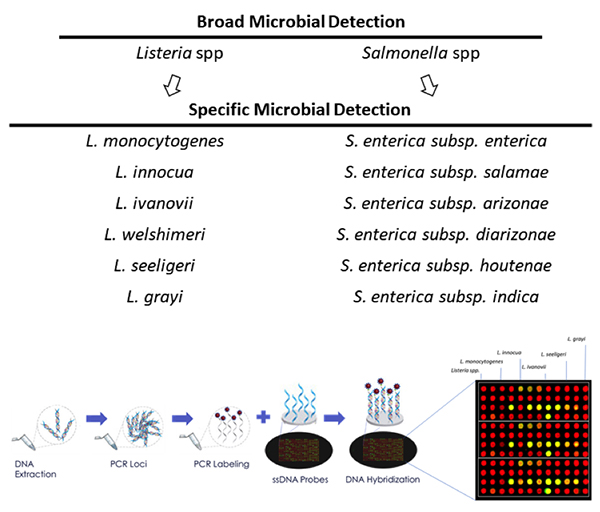The USDA has appointed 21 new members and nine returning members to the National Advisory Committee on Microbiological Criteria for Foods (NACMCF). The purpose of the committee is to provide impartial scientific advice and recommendations to federal food safety agencies. Members of the committee are chosen based on their expertise in microbiology, risk assessment, epidemiology, public health, food science and other relevant disciplines. One individual affiliated with a consumer group is included in the membership of the committee and five members are federal government employees representing the five federal agencies involved in NACMCF—USDA FSIS, FDA, CDC, the Department of Commerce National Marine Fisheries Service, and the Department of Defense Veterinary Services.
“NACMCF members bring a wealth of expertise and dedication to the critical mission of ensuring the safety of our nation’s meat and poultry products,” said Agriculture Secretary Tom Vilsack. “Their contributions will help us continue to strengthen our nation’s food supply and protect the health and well-being of American consumers.”
The newly appointed NACMCF members, who will serve two-year terms are:
- Dr. Bledar Bisha. University of Wyoming, Laramie, Wyoming
- Dr. Heather Carleton. Centers for Disease Control and Prevention, Atlanta, Georgia
- Dr. Anna Carlson. Cargill Protein, Wichita, Kansas
- Dr. Hayriye Cetin-Karaca. Smithfield Foods, Springdale, Ohio
- Dr. Ben Chapman. North Carolina State University, Raleigh, North Carolina
- Dr. Vik Dutta. bioMérieux, Chicago, Illinois
- Dr. Larry Figgs. Douglas County Health Dept., Omaha, Nebraska
- Dr. David Goldman. Groundswell Strategy, Arlington, Virginia
- Dr. Michael Hansen. Consumer Reports, Yonkers, New York
- Dr. Arie Havelaar. University of Florida, Gainesville, Florida
- Dr. Ramin Khaksar. Clear Labs, San Carlos, California
- Lieutenant Colonel Noel Kubat. Department of Defense, U.S. Army Veterinary Corps, Fort Knox, Kentucky
- Dr. KatieRose McCullough. North American Meat Institute, Washington, D.C.
- Dr. Indaue Giriboni de Mello. Newman’s Own, Westport, Connecticut
- Dr. Eric Moorman. Butterball, LLC, Garner, North Carolina
- Dr. Abani Pradhan. University of Maryland, College Park, Maryland
- Mr. Shivrajsinh Rana. Reckitt, Parsippany, New Jersey
- Dr. Marcos Sanchez Plata. Texas Tech University, Lubbock, Texas
- Dr. Kristin Schill. University of Wisconsin – Madison, Madison, Wisconsin
- Dr. Nikki Shariat. University of Georgia, Athens, Georgia
- Dr. Abigail Snyder. Cornell University, Ithaca, New York
The returning NACMCF members are:
- Dr. Yaohua (Betty) Feng. Purdue University, West Lafayette, Indiana
- Ms. Janell Kause. U.S. Department of Agriculture, Food Safety and Inspection Service, Washington, D.C.
- Dr. Elisabetta Lambertini. Global Alliance for Improved Nutrition, Washington, D.C.
- Ms. Shannara Lynn. U.S. Department of Commerce, National Seafood Inspection Laboratory, Pascagoula, Mississippi
- Dr. Maxim Teplitski. International Fresh Produce Association, Washington, D.C.
- Dr. Bing Wang. University of Nebraska – Lincoln, Lincoln, Nebraska
- Dr. Benjamin Warren. Food and Drug Administration, Center for Food Safety and Applied Nutrition, College Park, Maryland
- Dr. Randy Worobo. Cornell University, Ithaca, New York
- Dr. Teshome Yehualaeshet. Tuskegee University, Tuskegee, Alabama
NACMCF will hold a virtual public meeting of the full committee and subcommittees from November 14, 2023, to November 16, 2023. In addition to welcoming the new members, the committee will introduce a new charge from FSIS on genomic characterization of pathogens and continue working on the response to the FDA’s charge on Cronobacter spp. in Powdered Infant Formula. Register here to attend the meeting.
















